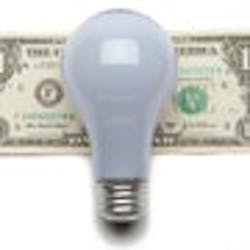All three cooling tower fans were operating but it was only 75° F outside. My question about it during the interview barely drew interest. Operators manually managed the cooling tower, regardless of demand. What a waste of energy! I made it my goal that summer, after I accepted the job, to find a way to automate this process if I could justify the costs. It was one of my greatest professional successes. Three months later I showed Anheuser-Busch how to cut its plant electric costs by almost 10%, which led to an offer to go to corporate engineering.
With the price of electricity and fuels rising, companies once more are hunting for ways to reduce operating costs; cutting energy costs could be your path to success. The trouble is that engineers in the 1970s and 1980s probably grabbed the low-hanging fruit.
Gary Faagau presents a lot of practical tips in his monthly “Energy Saver” column (http://www.chemicalprocessing.com/voices/energy_saver.html), but the subject is so big and so important that I also want to give you some ideas, both new and old, for conserving energy. First, to make the most of your efforts, focus on process heating because it typically consumes more than double the energy of all electrical equipment like pumps and compressors.
Reducing cost means cutting back on quantity or price. If you can’t lower the amount of heat required, maybe you can reduce its unit price. Consider switching a burner to oil from natural gas. Why not generate your energy from alternative sources such as waste or unused refinery fuels like petroleum coke? An ethanol plant in Ft. Wayne, Ind., burns wood chips from a nearby paper mill. During natural gas shortages in the 1970s in Ohio, plants substituted propane diluted with air. But don’t forget to factor in the costs of permits, burner tuning and efficiency. Cogeneration might allow you to operate at higher boiler efficiency and meet some of your electrical needs. Eastman Chemical employs a sophisticated energy-management system to minimize costs (see “Take the Guesswork out of Utility Management,” www.ChemicalProcessing.com/articles/2006/189.html).
Dust off your process flow diagrams. Look for steps where streams are heated and then cooled. Check for ways of reducing these cycles to improve efficiencies. Converting air-to-air coolers to air-to-water coolers using cooling water is an old idea that doesn’t currently get the attention it deserves. Likewise, the practice of installing economizers on furnaces to preheat feed streams, which was popular in the 1980s, has unexplainably waned. Steam systems remain a fertile field for savings. If you can’t manage your steam traps, operations will bypass them, which can be very expensive: assuming a 50°F starting temperature, heating fresh water could cost you 16% of the heating value of the steam. Now, doesn’t a condensate recovery system make sense?
Some low-hanging fruit still might be hidden in the leaves. Eliminating air-driven equipment is a good start. Did you know that it takes 8 hp of electrical work to produce 1 hp of work from air (“Energy Savings are often Disguised as Problems,” www.ChemicalProcessing.com/articles/2006/107.html)? At a cereal company I equipped a mechanic with a set of tables and charts for estimating savings by eliminating air losses in a packaging room. In no time we had a tidy list.
Insulation is a gray area. Some insulation projects have a good payback, i.e., less than four years, while others don’t. Look at the total cost and insulate in bulk. Most contractors provide volume discounts.
Investing some time on control projects may yield cost savings. My solution to the cooling-tower energy waste was nothing fancy: sequence the tower fans to the sump temperature and the pumps to the line pressure. Shutting down utilities — steam or electricity — not in service could be a money saver. Again, be mindful of the total cost of the project during evaluation.
If you haven’t started a database of utility usage, get started. If you have one, make sure it’s current and accurate. The only way I could justify the cooling tower project was by developing a program for monitoring consumption and prices. This also was the basis of the Eastman Chemical project I cited.
One last word: avoid the soap salesmen. There was a period when everyone seemed to be pushing variable speed drives (VFD). While a VFD/motor combination can save energy compared to a fixed-speed motor and control valve, a careful comparison of options often shows that the VFD option has the lower rate-of-return because of high initial cost — and it may require a different control strategy, to boot (www.ChemicalProcessing.com/articles/2008/069.html). So, always view ideas with a thoughtful eye.
Dirk Willard is a Chemical Processing contributing editor. You can e-mail him at [email protected].
About the Author

Dirk Willard
Contributing Editor
DIRK WILLARD is a former ASBPE award-winning columnist for Chemical Processing's Field Notes column. During his 10+ years as a contributing editor for CP, he wrote hundreds of valuable and insightful pieces on design and operational issues. He retired in 2023.
